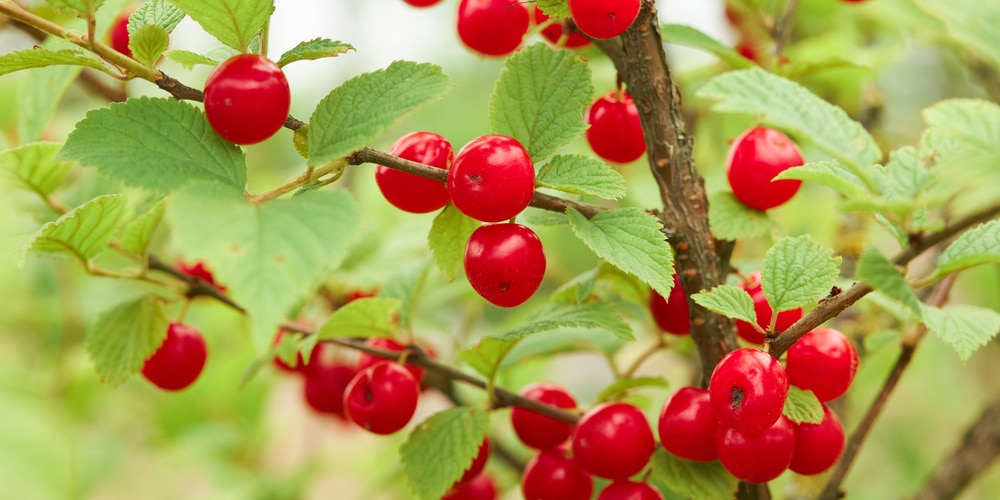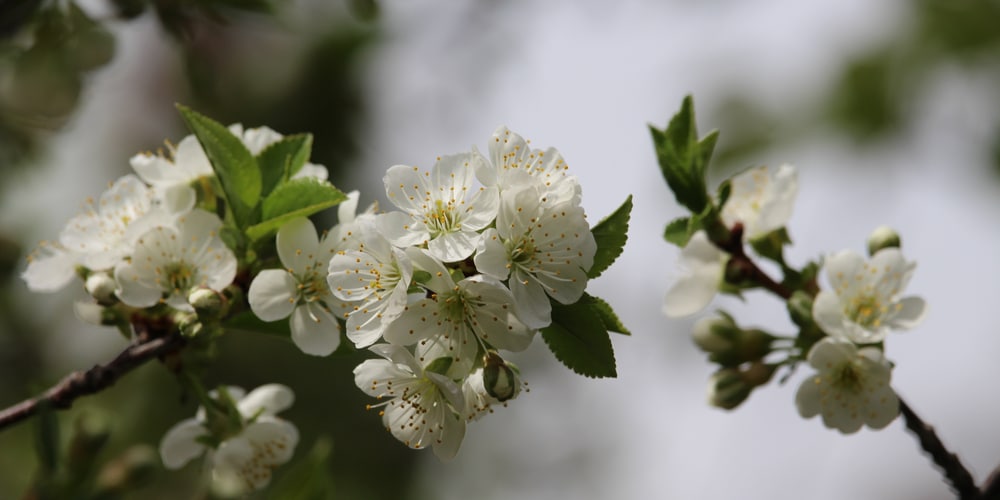Cherries are tasty treats and appear on store shelves for only a short time. That said, you might be tempted to know- when is cherry season?
Cherry growers know that cherry trees in general bloom last but are the first to be harvested. The growing season for cherry plants is shorter than other fruiting trees, with a range of 55 to 90 days depending on what variety you have.
When is Cherry Season?

Cherries have a shorter season than most fruits due to several reasons. One, cherry trees create flowers and buds quickly, which equals a sooner harvest.
Two, cherries tend to ripen quickly and spoil just as fast too. Generally, the last time you’ll see plentiful cherries is during August or September. After that, you will have to wait next year to see the round and tart fruits again.
Most commercial cherry growers begin harvesting fruits starting mid-April until late July. However, the months could be different depending on the climate or zone you live in.
The popular cherry varieties, Rainier and Bing, can be seen from May all through August. For tart and sour cherries, the season is somewhere in June in warm climates and July or August in colder zones.
Cherries in California are usually harvested in late April, while Washington cherries are harvested in early June. In higher elevations, harvesting can take place until late August.
Cherry Season by State
Cherry trees grow best in the West and states such as California, Idaho, Oregon, and Washington in particular. People living in these areas get the first batch of cherries, which tend to appear in markets and shelves by the middle of May until July. By August, the supply tends to dwindle and by September nearly all of them will be gone.
For those in the East and Midwest, cherries will appear later on due to the fruits needing time to travel. The peak cherry season will then be in summer until around September. The supply of cherries tends to be shorter for people living in these zones.
Most cherry trees start producing flower buds in April. The week or month will also depend on the species- these fruiting plants will form blossoms in early spring to summer, and they soon turn to red and juicy fruits beginning late spring through early fall.
It’s worth noting that sour cherries and Rainier cherries have shorter seasons. Local growers in the Pacific Northwest are known to cultivate the sweeter and yellowish cherry fruit, with the Rainier cherry season being limited to two months, June and July.
Sour cherries are limited to less than 30 days, with a harvest window starting from the middle of June up until the end of the month. This variety may not be found in supermarkets, but you can check local produce shops, farmers’ markets, and others to get a taste of this rare fruit.
How Long Does It Take to Grow and Harvest Cherries?
Cherry trees take a significantly long time to mature and begin producing fruits. The standard varieties usually need anywhere between four to seven years after being planted in the garden, while the dwarf varieties only need around two to four years to set. Sour cherries can start producing fruit in as little as three years.
Sweet cherry or Prunus avium can be planted in zones 5 to 8 while the sour cherry variety can be grown in zones 4 through 9. Once mature, it only takes 55 to 90 days for you to start picking cherries off your trees (depending on the variety).
Like most fruit trees, cherries prefer to stay in a location that gets consistent full sun. A spot in your yard or garden that gets a minimum of 6 to 8 hours is required so the cherry tree grows to its full potential.
It’s worth noting that cherries need around 1,000 to 1,300 chilling hours to begin producing flowers that eventually turn into fruit. However, a late frost can kill the early buds and prevent them from growing any further.
Plant your cherry tree in well-drained and loose soil that’s rich in organic matter. Cherry trees do not do well in compacted or clay soil, so it might be best to amend with sand or potting mix before planting them.

